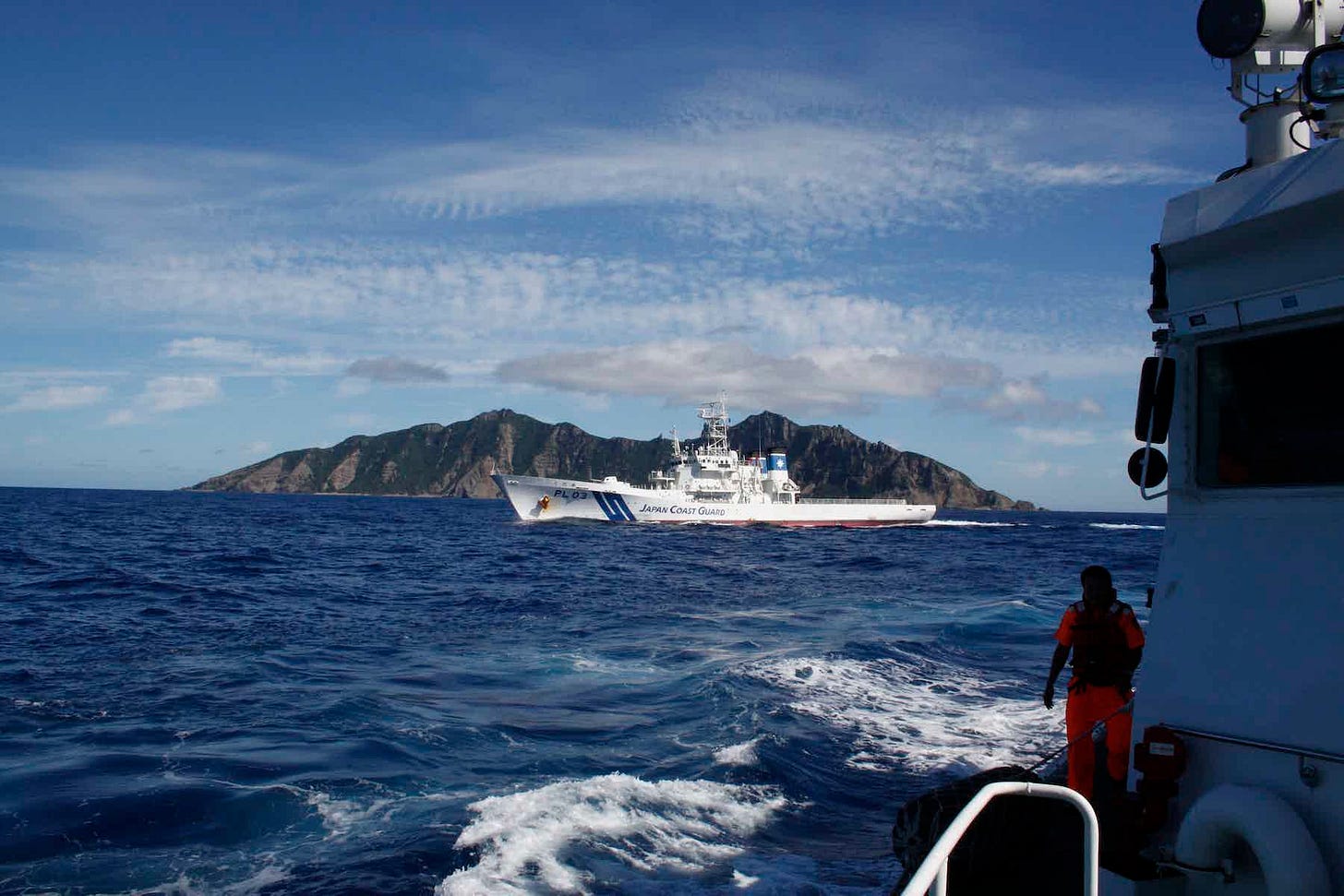Borderline Brief (4/150): The Senkaku Islands/Diaoyu Islands
This dispute involves conflicting claims to a group of uninhabited islands in the East China Sea, primarily between Japan and China, but also involving Taiwan.

Introduction
In this edition of our series on territorial disputes, we explore the contentious issue of the Senkaku Islands, known as the Diaoyu Islands in China. This dispute involves conflicting claims to a group of uninhabited islands in the East China Sea, primarily between Japan and China, but also involving Taiwan. The Senkaku Islands have been a source of diplomatic tension and regional rivalry, with each party asserting historical, legal, and strategic reasons for ownership. This post will delve into the history, key players, and current status of the Senkaku Islands dispute.
Background
The Senkaku Islands are a group of eight uninhabited islands and rocks located in the East China Sea, approximately 200 nautical miles northeast of Taiwan, 200 nautical miles east of the Chinese mainland, and 200 nautical miles southwest of the Japanese island of Okinawa. The islands are strategically located in an area rich in fish stocks and potentially lucrative oil and gas reserves, adding to their value.
The dispute over the Senkaku Islands dates back to the late 19th century when Japan formally incorporated the islands into its territory. However, China and Taiwan dispute Japan's claim, arguing that the islands have been part of Chinese territory since ancient times. The United States administered the islands after World War II but returned them to Japan in 1972, further complicating the issue.
Causes of the Dispute
The primary cause of the dispute over the Senkaku Islands is conflicting claims to sovereignty and the associated maritime rights and resources. Japan asserts its ownership based on historical documents and continuous administration, while China and Taiwan argue that the islands were illegally seized by Japan during the Sino-Japanese War in 1895.
Another factor contributing to the dispute is the strategic importance of the islands. The surrounding waters are a major shipping lane and fishing ground, and there are believed to be significant oil and gas reserves in the region. Control over the islands would also extend each party's exclusive economic zone (EEZ) and strengthen their maritime claims.
Current Status and Future Prospects
The Senkaku Islands dispute remains unresolved, with tensions periodically flaring up between Japan and China. Both countries have engaged in provocative actions, including naval patrols and the deployment of military aircraft, raising concerns about the potential for conflict in the region.
Efforts to find a peaceful resolution to the dispute have been hampered by the complex nature of the issue and the entrenched positions of the parties involved. The United States, as a treaty ally of Japan, has expressed support for Japan's position but has also called for peaceful dialogue to resolve the dispute.
Conclusion
The Senkaku Islands dispute is a complex and contentious issue that underscores the challenges of managing territorial disputes in the modern era. As we continue our series on territorial disputes around the world, we will explore other examples of conflicts over land, resources, and sovereignty, shedding light on the complexities of these issues and the potential paths toward resolution. Thank you for joining us on this journey, and we look forward to exploring more territories in future posts.


